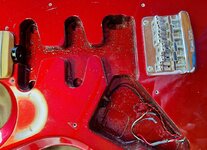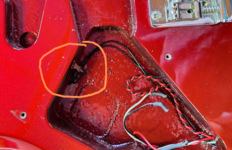
 Hi. I recently acquired a 1997 Silhouette Special, quite rare in lefty, I think. The previous owner had 'upgraded' the pickups to an EMG Active set, however he still had the original pickups and wiring loom including the silent circuit and was happy to hand it all over, so I am presently re-fitting them.
Hi. I recently acquired a 1997 Silhouette Special, quite rare in lefty, I think. The previous owner had 'upgraded' the pickups to an EMG Active set, however he still had the original pickups and wiring loom including the silent circuit and was happy to hand it all over, so I am presently re-fitting them.I have a question regarding shielding. I would normally put copper tape in all of the cavities, but I wonder if there is already shielding paint in them. Would that be the case?
Thanks for any help.



